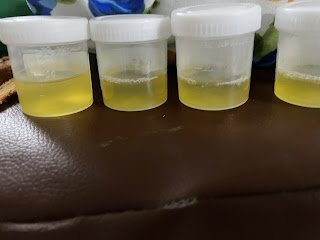A 65/F with abdominal distension CBBLE UDHC Similar cases
I have been given this case to solve in an attempt to understand the topic of "Patient Clinical Data Analysis" to develop my competency in reading and comprehending clinical data including history, clinical findings, investigations and diagnosis with a treatment plan.
This is an online E log book to discuss our patient’s de-identified health data shared after taking his guardian’s signed informed consent.
Chief complaints
Loss of appetite since 1 week
Tightness of abdomen since 5 days
2 episodes of giddiness (one episode 3 days back and another episode 1 day back for which she received medical attention in a local hospital)
History of presenting illness:
Patient was apparently asymptomatic 1 week and then developed loss of appetite. She reports feeling full after consuming little amount of food. She feels full after consuming 2 idlis. She complained of not passing stools for 2-3 days but passed stools yesterday (24/2/22).
Patient complains of Tightness of abdomen since 5 days. Abdomen is distended, non tender. Abdomen distension increases on eating. Flatus passed, stools passed yesterday but not with ease and was constipated for a while. Concerned about the abdominal distension, the patient was taken to a local hospital and was advised USG abdomen. After getting the scan done, patient felt giddy and was given NS infusion for it. Her attenders say she had not eaten anything that day and attribute that to the giddiness. There was no loss of consciousness.
She had another episode of giddiness 3 days back as well.
No history of fever, jaundice, hematemesis or malaena, pain abdomen, significant weight loss, alcohol consumption.
No similar complaints in the past.
Attenders say that the patient is very active, wakes up early in the morning and does all her chores by herself. But has some difficulty in climbing stairs and occasionally complaints of knee pains.
Past history:
There is no history of diagnosis of Hypertension, Diabetes mellitus, thyroid disorders, epilepsy, tuberculosis or CAD.
Past surgical history:
She underwent cataract surgery for right eye 5 years back.
No history of blood transfusions.
Family History:
No history of Hypertension, Diabetes Mellitus, epilepsy, CAD, malignancies.
General examination:
The patient is conscious, coherent and cooperative.
There is no pallor, icterus, cyanosis, clubbing, koilonychia, edema or lymphadenopathy.
Temp: afebrile
PR: 76 bpm
BP: 110/80 mmhg
RR: 16 cpm
SpO2: 98% on RA
GRBS: 110 mg/dl
Clinical images
On examination:
Inspection:
Abdomen is distended
Engorged veins seen.
Umbilicus is everted.
No sinuses,scars seen.
Palpation:
Non tender.
Subcutaneous nodules felt in right hyponchondrium region.
Fluid thrill absent.
Percussion:
Dull note elicited.
Investigations:
CUE
Albumin: +
Sugar: nil
Pus cells: 3-6
Epithelial cells: 2-4
HEMOGRAM
HB 12.2
TC 10,400
PLT 6.38 lac
MCV 87.2
PCV 36.6
MCH 29.3
MCH 29.3
SMEAR - NORMOCYTIC NORMOCHROMIC, WITH neutropenia, thrombocytosis
SMEAR FOR MALARIAL PARASITE - Negative
ESR - 25
BGT - A +ve
CUE
ALB - trace
Sugar - nil
Puscells - 2-4
Epithelial cells - 2-4
HbSAg - negative
HCV - negative
HIV - negative
Dengue serology
NS1 - +ve
IgG - negative
IgM - negative
RFT
Urea- 44
Creatinine- 1.1
UA-4.1
Sodium-137
Potassium-4.7
Chloride-104
LFT
TB-1.37
DB-0.47
AST-84
ALT-49
ALP-168
TP-56
ALB-3.31
Coagulation profile
BT- 2-00
CT - 4-30
APTT- 31 sec
PT - 16
INR - 1.1
RBS - 110
S.Amylase 23
S. Lipase - 14
24h urinary protein - 63.1mg (400ml)
Chest X-ray
26/2/22
Ascitic fluid analysis
Mesothelioma cells seen
Sugar: 84
Protein: 4.3
Alb: 2.5
Amylase:23.8
LDH: 751
SAAG: 0.2
Ascitic fluid ADA
Impression: Exudative Ascitic fluid
Based on the SAAG, the cause was suspected to be either.malignant or tuberculosis
USG ABDOMEN was done to look for any malignancy or metastatic deposits.
USG ABDOMEN showed endometrial thickness 11mm, for which OBG referral was done.
Upon referral, ovarian and endometrial malignancy were ruled out and for further confirmation endometrial aspiration was advised.










Comments
Post a Comment